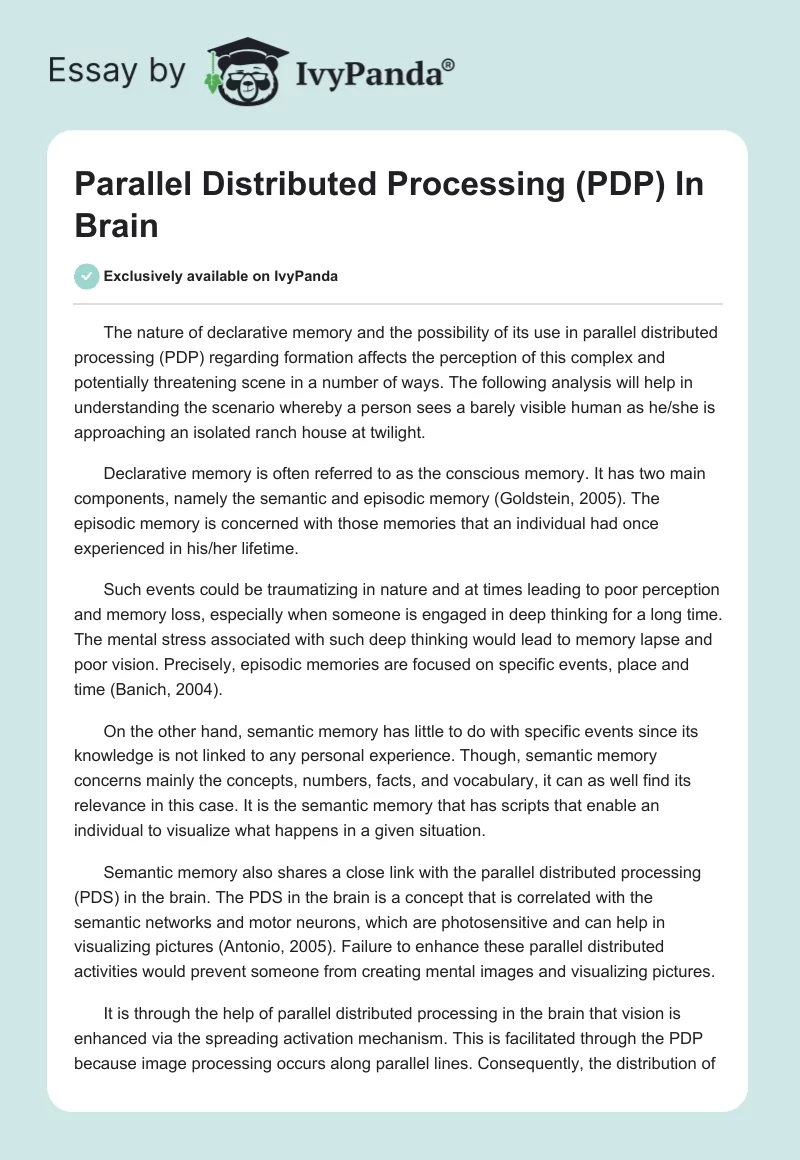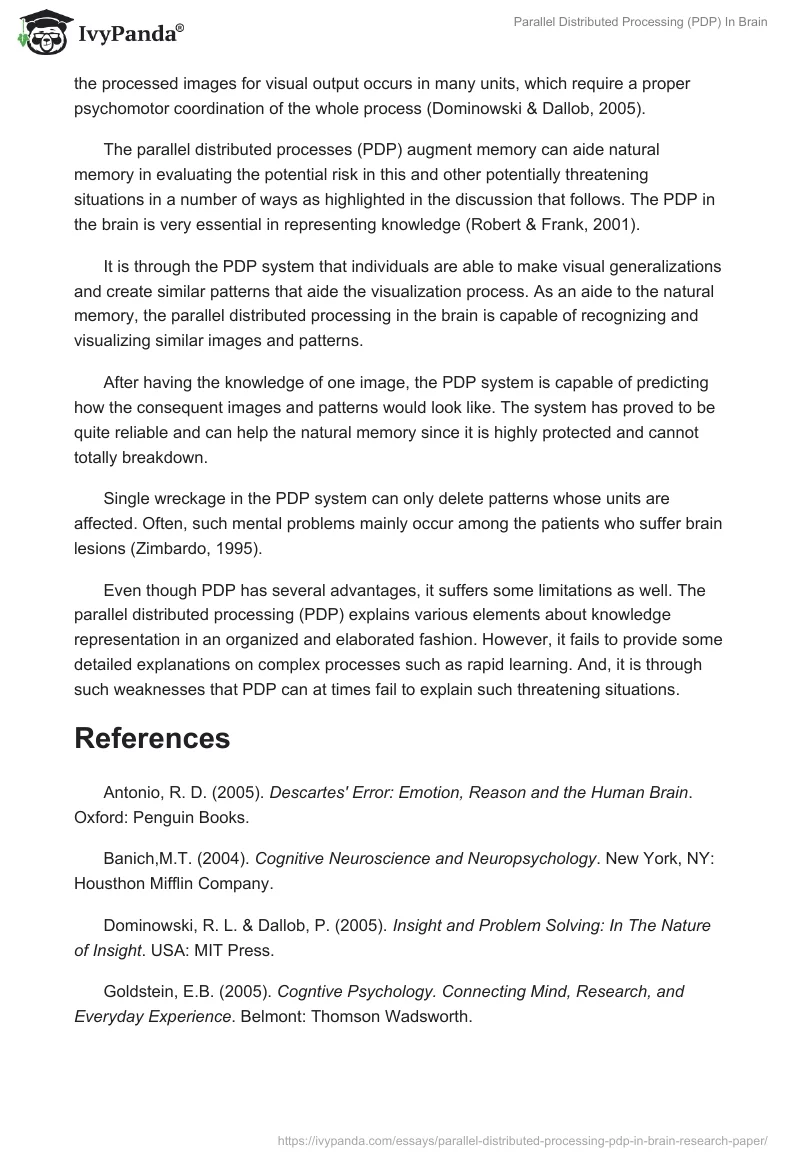The nature of declarative memory and the possibility of its use in parallel distributed processing (PDP) regarding formation affects the perception of this complex and potentially threatening scene in a number of ways. The following analysis will help in understanding the scenario whereby a person sees a barely visible human as he/she is approaching an isolated ranch house at twilight.
Declarative memory is often referred to as the conscious memory. It has two main components, namely the semantic and episodic memory (Goldstein, 2005). The episodic memory is concerned with those memories that an individual had once experienced in his/her lifetime.
Such events could be traumatizing in nature and at times leading to poor perception and memory loss, especially when someone is engaged in deep thinking for a long time. The mental stress associated with such deep thinking would lead to memory lapse and poor vision. Precisely, episodic memories are focused on specific events, place and time (Banich, 2004).
On the other hand, semantic memory has little to do with specific events since its knowledge is not linked to any personal experience. Though, semantic memory concerns mainly the concepts, numbers, facts, and vocabulary, it can as well find its relevance in this case. It is the semantic memory that has scripts that enable an individual to visualize what happens in a given situation.
Semantic memory also shares a close link with the parallel distributed processing (PDS) in the brain. The PDS in the brain is a concept that is correlated with the semantic networks and motor neurons, which are photosensitive and can help in visualizing pictures (Antonio, 2005). Failure to enhance these parallel distributed activities would prevent someone from creating mental images and visualizing pictures.
It is through the help of parallel distributed processing in the brain that vision is enhanced via the spreading activation mechanism. This is facilitated through the PDP because image processing occurs along parallel lines. Consequently, the distribution of the processed images for visual output occurs in many units, which require a proper psychomotor coordination of the whole process (Dominowski & Dallob, 2005).
The parallel distributed processes (PDP) augment memory can aide natural memory in evaluating the potential risk in this and other potentially threatening situations in a number of ways as highlighted in the discussion that follows. The PDP in the brain is very essential in representing knowledge (Robert & Frank, 2001).
It is through the PDP system that individuals are able to make visual generalizations and create similar patterns that aide the visualization process. As an aide to the natural memory, the parallel distributed processing in the brain is capable of recognizing and visualizing similar images and patterns.
After having the knowledge of one image, the PDP system is capable of predicting how the consequent images and patterns would look like. The system has proved to be quite reliable and can help the natural memory since it is highly protected and cannot totally breakdown.
Single wreckage in the PDP system can only delete patterns whose units are affected. Often, such mental problems mainly occur among the patients who suffer brain lesions (Zimbardo, 1995).
Even though PDP has several advantages, it suffers some limitations as well. The parallel distributed processing (PDP) explains various elements about knowledge representation in an organized and elaborated fashion. However, it fails to provide some detailed explanations on complex processes such as rapid learning. And, it is through such weaknesses that PDP can at times fail to explain such threatening situations.
References
Antonio, R. D. (2005). Descartes’ Error: Emotion, Reason and the Human Brain. Oxford: Penguin Books.
Banich,M.T. (2004). Cognitive Neuroscience and Neuropsychology. New York, NY: Housthon Mifflin Company.
Dominowski, R. L. & Dallob, P. (2005). Insight and Problem Solving: In The Nature of Insight. USA: MIT Press.
Goldstein, E.B. (2005). Cogntive Psychology. Connecting Mind, Research, and Everyday Experience. Belmont: Thomson Wadsworth.
Robert, A. W. & Frank, C. K. (2001). The MIT Encyclopedia of Cognitive Sciences (MITECS). New York, NY: Bradford Book.
Zimbardo, P. G. (1995). Psychology and Life. Inc. Glenview, Illinois: Scott, Foresman and Company.


